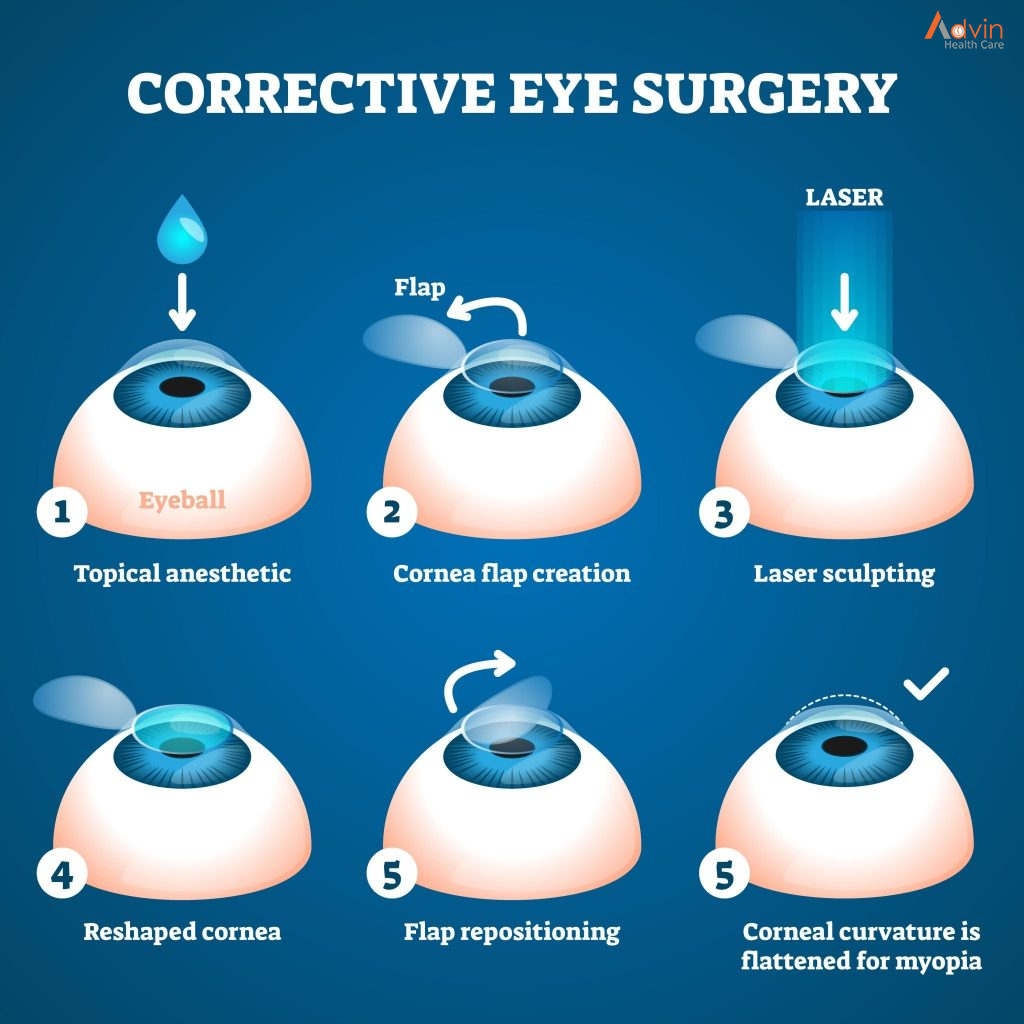LASIK Eye Surgery
LASIK eye surgery is the best known and most commonly performed laser refractive surgery to correct vision problems. Laser-assisted in situ keratomileusis (LASIK) can be an alternative to glasses or contact lenses.
During LASIK surgery, a special type of cutting laser is used to precisely change the shape of the dome-shaped clear tissue at the front of your eye (cornea) to improve vision.
In eyes with normal vision, the cornea bends (refracts) light precisely onto the retina at the back of the eye. But with near-sightedness (myopia), farsightedness (hyperopia) or astigmatism, the light is bent incorrectly, resulting in blurred vision.
Glasses or contact lenses can correct vision, but reshaping the cornea itself also will provide the necessary refraction.
Why it’s done

surgery may be an option for the correction of one of these vision problems:
- Nearsightedness (myopia). When your eyeball is slightly longer than normal or when the cornea curves too sharply, light rays focus in front of the retina and blur distant vision. You can see objects that are close fairly clearly, but not those that are far away.
- Farsightedness (hyperopia). When you have a shorter than average eyeball or a cornea that is too flat, light focuses behind the retina instead of on it. This makes near vision, and sometimes distant vision, blurry.
- Astigmatism. When the cornea curves or flattens unevenly, the result is astigmatism, which disrupts focus of near and distant vision.
If you’re considering LASIK surgery, you probably already wear glasses or contact lenses. Your eye doctor will talk with you about whether LASIK surgery or another similar refractive procedure is an option that will work for you.
Will I be asleep during LASIK eye surgery?
No, you will be awake during the surgery. But, don’t worry, you won’t feel any pain from the lasers.
What happens during LASIK eye surgery?

The process of LASIK eye surgery can be divided into five steps:
- After you lie down flat, your ophthalmologist will use eye drops to numb your eyes. Although you won’t be in pain, you might feel pressure during the procedure. Patients have reported that the pressure is like a finger pressing against your eyelid.
- Your surgeon will place an eyelid holder and suction ring on your eye. The holder will keep you from blinking and the ring will keep your eye from moving. Your vision will dim, or possibly go completely black.
- Using a laser programmed with your eye measurements, your surgeon will make a flap as thin as a piece of paper in your cornea. They’ll then lift and fold that flap back, like turning the page of a book.
- Next, your surgeon will ask you to stare at a light shining in your eye. Staring at it keeps your eyes from moving. The laser is used again, this time to reshape your cornea so that it refracts light better. The laser might make a clicking/ticking sound. You might smell the scent of burned hair.
- Finally, your ophthalmologist will fold the flap of tissue back down. It will start to heal quickly — settling into place within two to three minutes.
It’s understandable if the process of LASIK surgery makes you feel uncomfortable. No one likes to think about a laser touching their eye. You might find it reassuring to know that LASIK is proven to be a safe procedure and very few people have any long-term side effects.
What happens after LASIK eye surgery?
After your LASIK eye surgery your eyes might itch or burn, or it might feel like there’s something in them. Don’t worry, this discomfort is normal. It’s also normal to have blurry or hazy vision, see glare, starbursts or haloes around lights and to be sensitive to light.
Since dry eyes are a common side effect of LASIK surgery, your ophthalmologist might give you some eye drops to take home. You might also be sent home with antibiotics and steroidal eye drops. Additionally, your ophthalmologist might also have you wear a shield over your eyes to stop you from touching your healing corneas, especially while you’re asleep.
You’ll return to your ophthalmologist one day after your surgery to get your vision tested and make sure that your eye is healing.
What are the advantages of LASIK eye surgery?
Around 90% of people who go through LASIK eye surgery have vision between 20/20 and 20/40 (without glasses or contact lenses). 20/20 vision is normal, healthy vision — not “perfect” vision. Studies have shown that an average of 95% of individuals who have had LASIK eye surgery are satisfied with the results.


